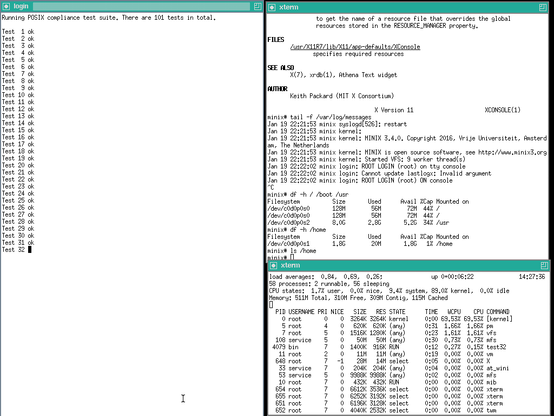So I really want to get the latest MINIX 3 source code building in a VirtualBox VM, and it's not simple. First, you have to install the latest development snapshot.
Then you have to somehow figure out what features of VirtualBox to turn off in order to make MINIX stable. So far, I've discovered that AHCI SATA doesn't work, 512MB RAM seems to be safe (not too much or too little to rebuild the system), it only supports 1 CPU, I/O APIC and PAE/NX are enabled, nested VT & nested paging disabled.
